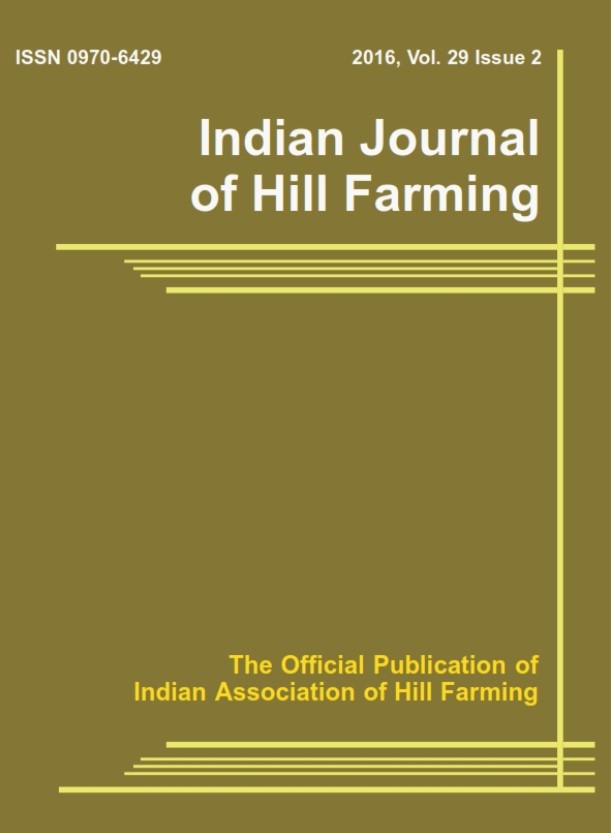Effect of weed management practices on nutrient uptake by direct seeded upland rice under Tripura condition
DOI:
https://doi.org/10.56678/Keywords:
Nutrient uptake, yield, pendimethalin, hand weeding, direct seeded riceAbstract
Direct-seeded rice (DSR) is a feasible alternative to mitigate methane emission, besides saving water and labour. The DSR crop can save 3-4 irrigations compared to the transplanted rice without any yield penalty. The yields are comparable with transplanted rice if crop is properly managed. Weeds are a major constraint to rice production in direct-seeded systems as they increase production costs and compete with the rice for light, water and nutrients. In this regard a field experiment was conducted during the kharif season of 2013 and 2014 to study the effect of weed management practices on nutrient uptake by direct seeded upland rice. The experiment consisted of twelve treatments laid out in randomized complete block design with three replication. The common weed flora found in the experimental field were Amaranthus viridis, Oldenlendia corymbosa, Spilanthes acmella, Ludwigia parviflora, Cleome rutidosperma, Malvestrum coromondalianeum among the broad leaf weed, Digitaria sanguinalis among grasses and Cyperus iria among sedges. The highest uptake of NPK was recorded by the treatment hand weeding thrice at 15, 30 and 45 DAS, while weedy check registered the lowest uptake values for all the major nutrients. Among the other treatments, pendimethalin at 1.0 kg ha-1 + one hand weeding at 30 DAS and pendimethalin at 1.0 kg ha-1 at 2 DAS + bispyribac sodium at 25 g ha-1 at 20 DAS were found more efficient with respect to nutrient uptake.Published
2023-03-31
Issue
Section
Articles
License
Copyright (c) 2023 Mandira Chakraborti, Buddhadeb Duary, Arunasis Goswami (Author)

This work is licensed under a Creative Commons Attribution-NonCommercial-NoDerivatives 4.0 International License.
How to Cite
Effect of weed management practices on nutrient uptake by direct seeded upland rice under
Tripura condition. (2023). Indian Journal of Hill Farming, 36(02), 203-207. https://doi.org/10.56678/




